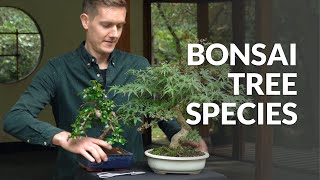Podocarpus Bonsai Care guidelines
The podocarpus macrophyllus can be kept indoors all year round, but it benefits from being outside during the summer in a semi-shaded place. It must be protected from frost, so take it into the house when temperatures begin to drop in autumn. In spring make sure that there is no night frost anymore when you place the tree outside again. In winter it can be kept at around 20° C (68° F) if it gets enough light. If you can't provide very much light it is better to keep the tree in a cooler room with 10° - 15° C (50° – 59° F).
Water the podocarpus when the soil gets dry. Keep it slightly moist but don't overwater it. Don't use very calcareous water. Continue reading about watering Bonsai trees.
Watering
Free lecture from the Beginners CourseApply solid organic fertilizer every four weeks or use a liquid fertilizer every week during the growing season. If the podocarpus has a warm place in winter it will keep growing a bit. Then use liquid fertilizer every two weeks or every four weeks if the tree is placed in a cooler room.
Podocarpus responds very well to pruning and trimming which stimulates ramification. Let new shoots grow until they have reached a length of approximately 4" (10cm) before shortening them. Just cut the stems carefully and don't cut through the leaves. Continue reading about pruning Bonsai trees.
Wiring can be done at any time of the year. Let young shoots harden a bit before wiring them. Take care not to crush any leaves with the wire. Wire will have to removed after a few months. Guywires are useful for shaping strong branches.
Repot young podocarpus trees every 2 – 3 years and older ones every 4 – 5 years. Don't prune the roots too heavily. Use a well-draining soil mix and if the tree is still in the typical loamy grey soil in which many podocarpus are imported, try to remove it carefully during the first repotting session without damaging too many roots. The podocarpus likes slightly acidic or neutral soil with a pH value of 5 – 6 and not over 7. Continue reading about repotting Bonsai trees.
The buddhist pine can be propagated from seed or cuttings. Cuttings need warm soil for rooting.
Normally, vigorous podocarpus trees are hardly attacked by pests and diseases. Scale or spider mites can occur if a tree is weakened by improper position (like warm, dry and dark indoors) and care, then use a specific pesticide and improve the growing conditions for your tree. Leaf drop and root rot can occur when the tree is overwatered. For more detailed information on these techniques, check out our Bonsai tree care section.
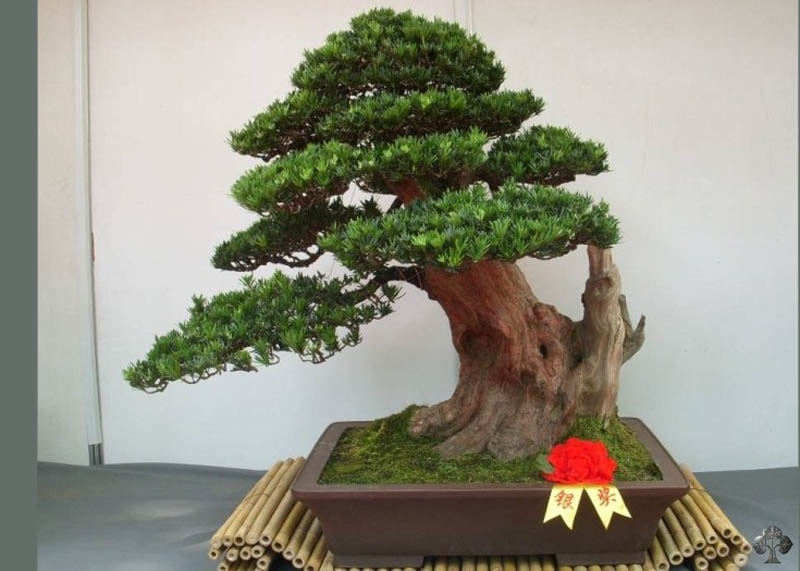
Podocarpus bonsai tree
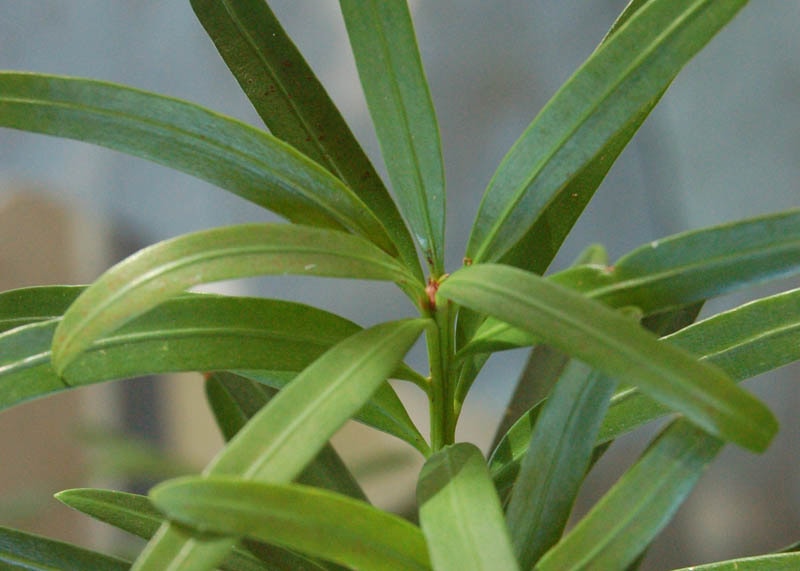
Leaves of the Podocarpus
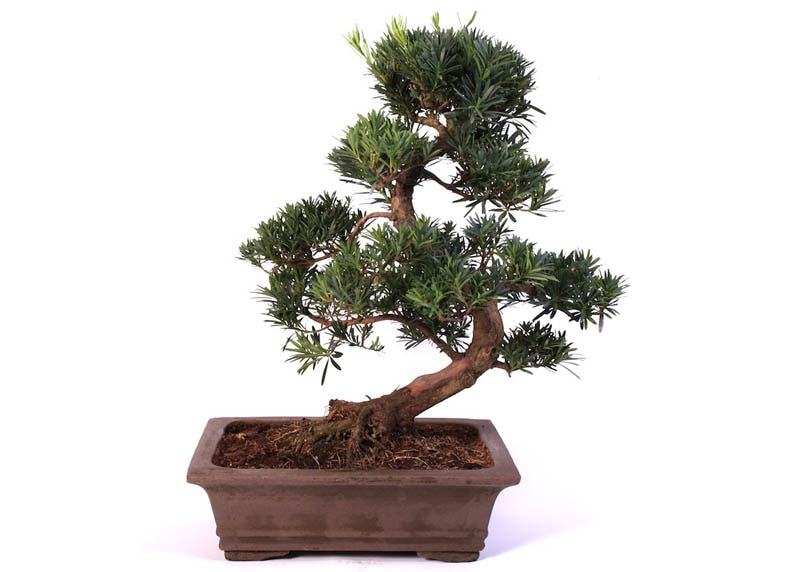
Podocarpus macrophyllus bonsai
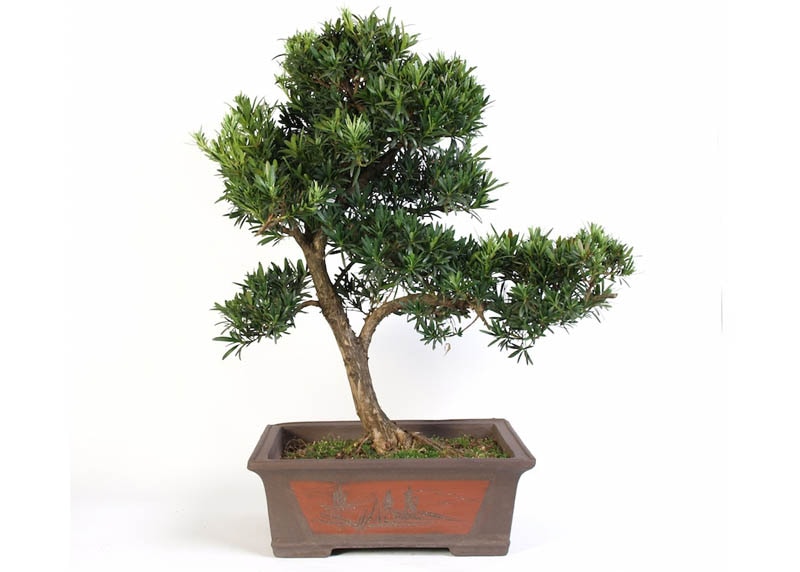
Podocarpus bonsai
General information about the Buddhist pine Bonsai tree
Podocarpus produces blue-green fruit with an aril covering each seed. The bark is dark brown and gets furrowed and scaly with age. In warm regions the buddhist pine is often used for hedges, ornamental shrubs or niwaki. In southern Asia the podocarpus is a very common bonsai and very large specimen in huge concrete or stone pots are often seen in front of parks, properties, company buildings or hotels. It is also referred to as the buddha tree.
As it is a tropical plant, the podocarpus is not frost-hardy and needs a warm place all year round and therefore it is a popular indoor bonsai. If you need help identifying your tree, take a look at our Bonsai tree identification guide.

